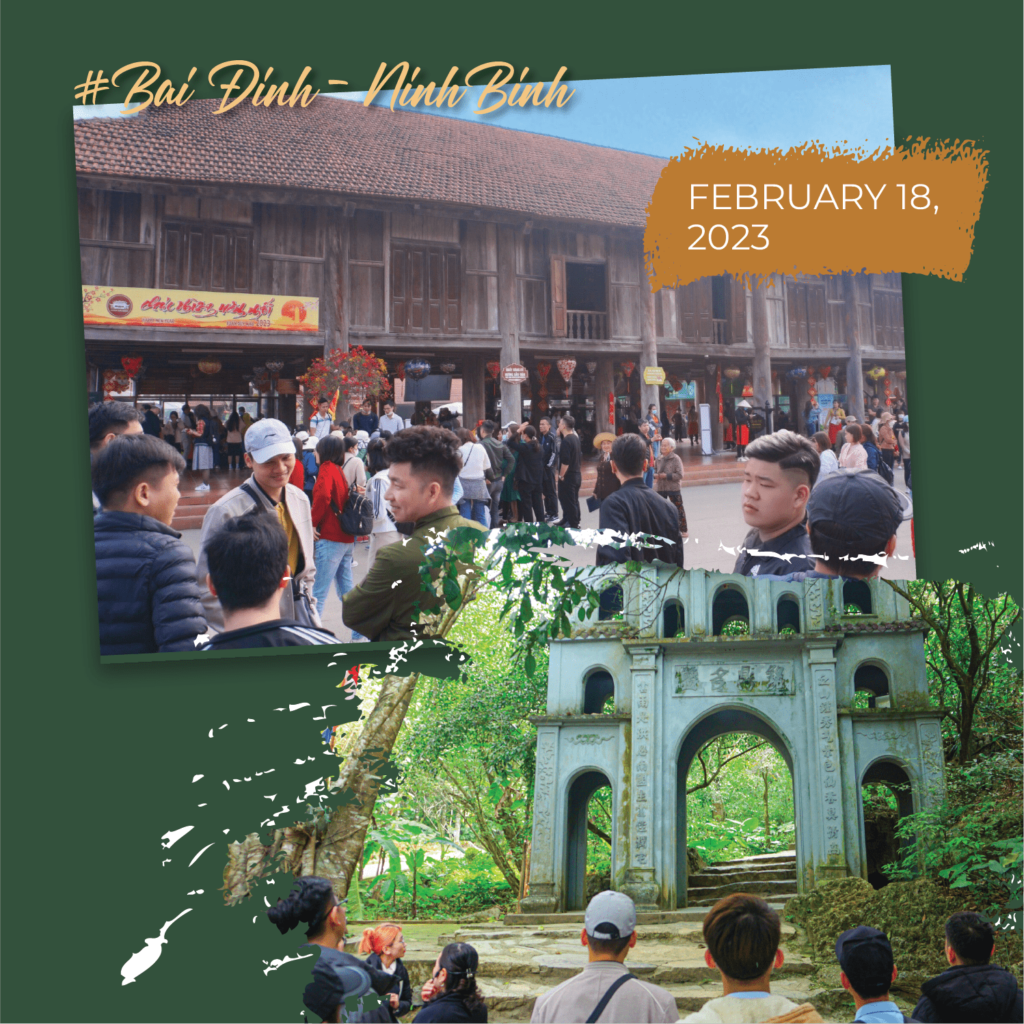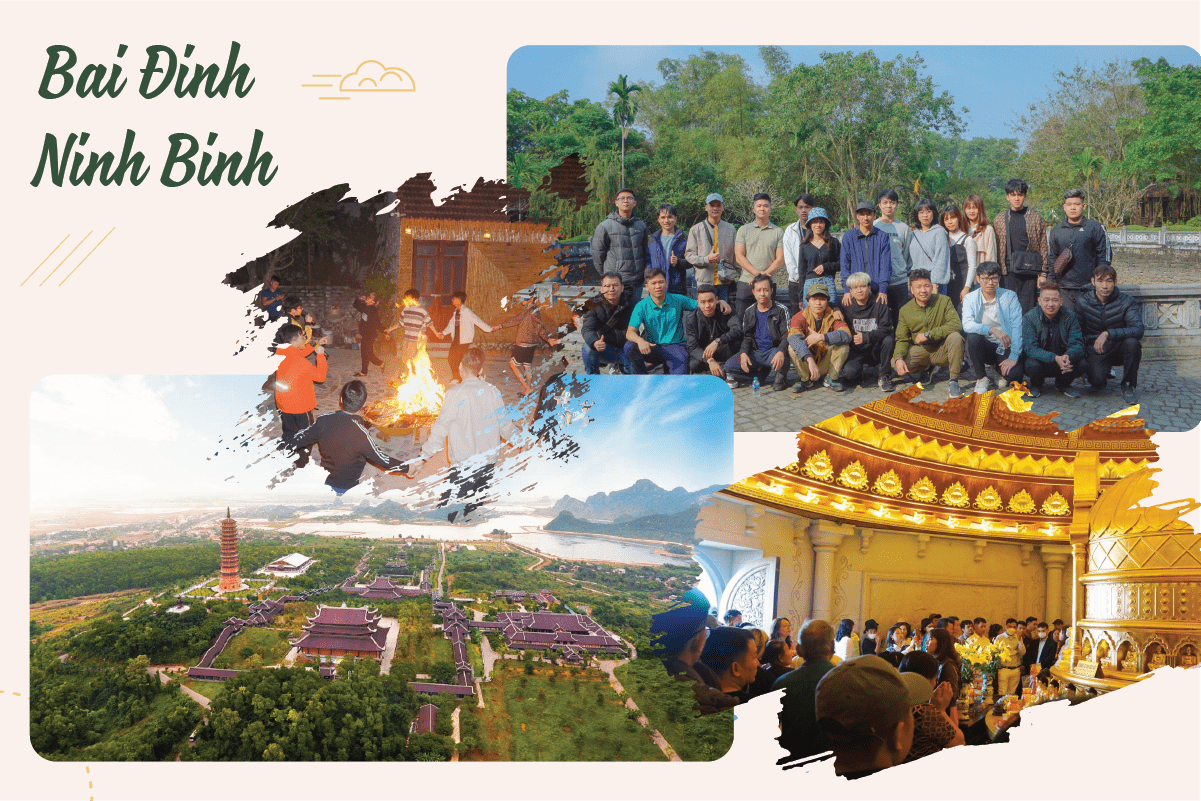Tet comes, spring is an opportunity for everyone to reunite, gather together, rest to start a new working year, also an ideal time to travel to spring.
For a long time, in addition to the rituals to see off the old year and celebrate the new year, it can be said that spring travel is a custom and an indispensable habit every spring.

On the occasion of the new year spring, some people choose to travel to distant lands; Some people go to the temple to visit the temple, ask for blessings at the beginning of the year, there are also people who just go to the houses of relatives, aunts and uncles, friends to visit and wish New Year. No need to go to noisy and bustling places, spring travel is simply going out of the house to enjoy the warm spring atmosphere, watching everything bloom and multiply.
A destination that has both beautiful scenery and a spiritual place to travel to pray for good luck at the beginning of the year, Ninh Binh is a place not to be missed. Ninh Binh owns a temple named Bai Dinh – the temple with the most records in Vietnam: the largest bell, the most Arhat statues, the largest pagoda, the largest Buddha statue, the largest campus. Located on a high mountain, after nearly 1,000 years of history, the ancient Bai Dinh pagoda still retains the quiet and sacredness, proving the enduring vitality of Buddhism in Vietnam.

All the roads of the historic ancient capital of Hoa Lu are lit up in the fresh spring colors. It is easy to see that the roads leading to the temple are cleaned and ventilated; places inside and outside Bai Dinh pagoda such as shrines, corridors… are decorated with colorful flags and flowers.
Magnificent beauty in a peaceful place
The name Bai Dinh pagoda means towards Mount Dinh, where heroic events in Vietnamese history took place. Bai Dinh pagoda mountain is the place where King Dinh Tien Hoang set up an altar to pray for rain and good weather, where the chess ceremony took place when King Quang Trung went to Thang Long to destroy the Qing army.
The ancient Bai Dinh pagoda was discovered by Saint Nguyen Minh Khong, who turned caves into pagodas when he came here to find a medicinal plant to turn into a tiger for King Ly Than Tong. Legend has it that there are many precious medicinal plants that Saint Nguyen Minh Khong often come down to collect and bring back to make “elixir”. Later, many physicians from all over the world also came to look for precious medicinal plants to treat people’s diseases. During the resistance war, Bai Dinh was also a revolutionary relic belonging to Quynh Luu war zone, where the leader of the Communist Party of Vietnam propagated the revolution to the people.
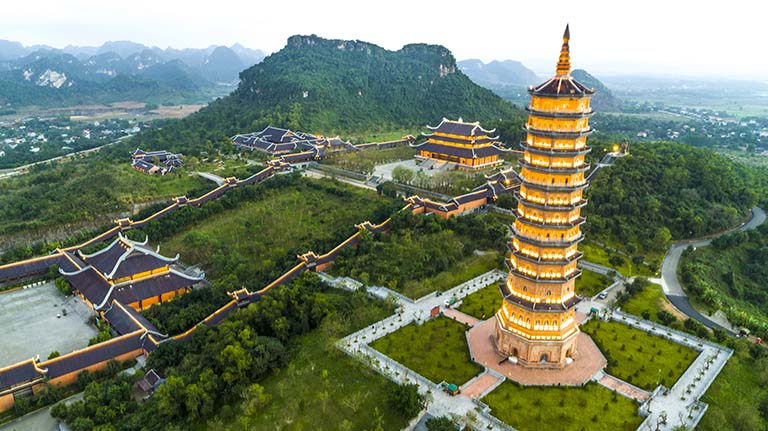
The ancient Bai Dinh pagoda is located on a 187m high mountain, about 800m southeast of Tam The temple of the new temple area. This temple area is located near the top of a fairly quiet mountainous area, including a front house in the middle, turning to the right is the morning cave to worship Buddha, then to the temple of Cao Son god at the end of the back door of the morning cave. ; Turn to the left is the temple of Saint Nguyen and then go to the dark cave to worship the mother and fairy. This place is located in the land that fully converges the elements of human genius according to the Vietnamese folk concept, that is, the land of the birth of the King, the birth of the Saint, the birth of the God.
The pagoda was built in the style of cave pagoda architecture, which is quite common in Ninh Binh, without the curved roofs of the pagoda or the nose, nor the huge, massive pillars or the magnificent upper palace. All the altars for worshiping Buddha and Mother of the temple are placed in the heart of the dark caves, adding to the sacred and mysterious atmosphere at the meditation door. Cave ceilings have become solid pagoda roofs, shielding the sacred places of Buddha and Mother for centuries. And Bai Dinh is not only a place for people to show their devotion, but also a beautiful landscape. When visiting here, King Le Thanh Tong personally dedicated four words “Ming Dinh famous” praising the beauty of this place.
New Bai Dinh Pagoda (Bai Dinh Tan Tu) is a large construction, with an area of 80 hectares, located on the other side of the mountain compared to the ancient pagoda and in the west of Hoa Lu ancient capital. Some main items: Tam The Palace, Phap Chu Palace, Quan Am Palace, Bao Thap, Bell Tower and other infrastructure and auxiliary works, Buddhist academy area, reception area…
Thus, if the old temple is humble in the middle of the mountains and forests, the new and massive temple will stand out among the majestic mountains as beautiful as a fairyland. The new Bai Dinh pagoda has majestic statues carved delicately leaning against the dark green mountainside as if bringing visitors to the boundary of the sacred and the mundane. The pagoda complex is like a sparkling, multi-colored pearl, converging the legendary spirit of thousands of years. The architecture of the new temple area stands out with large, monumental blocks bearing Vietnamese architectural imprints and using main local materials: Ninh Binh green stone, wood quartet, Bat Trang glazed tile in dark brown color. … The dark brown dome, curved phoenix tail is the most distinctive feature of the new architecture of Bai Dinh pagoda. The architectural decoration details also bear the imprint of famous traditional craft villages in Vietnam with the contribution of 500 artisans and many workers’ groups from famous craft villages such as Phuc Loc carpentry, Ninh Van stone carving station, Y Yen bronze casting, Van Lam embroidery, Cat Dang lacquer, Dong Xam silver station… These artisans use local materials to create pure Vietnamese features in Bai pagoda architecture. Attach.
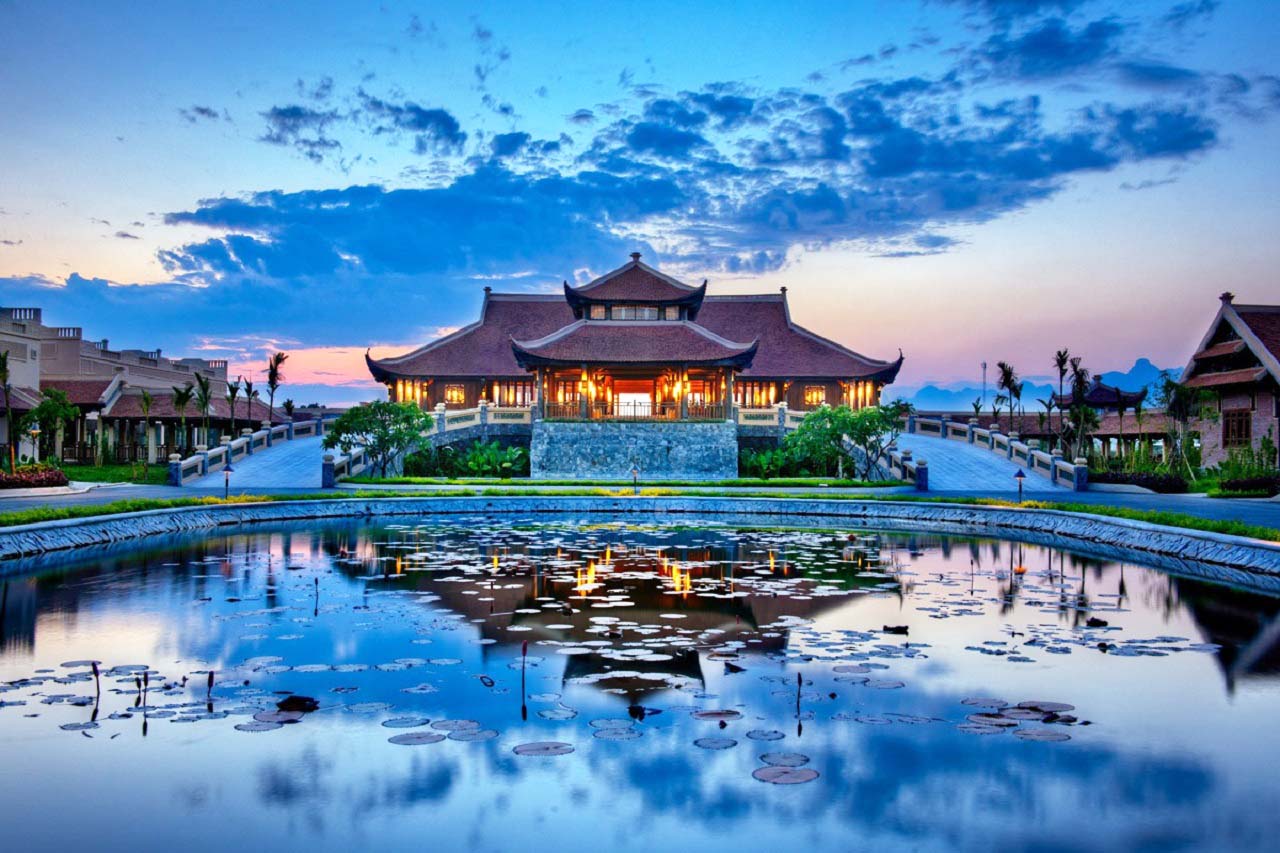
Today, Bai Dinh Pagoda is being considered as the most attractive spiritual tourist destination in Vietnam with recorded records such as: the largest pagoda area in Vietnam (539 hectares in total, 27 hectares for the old pagoda alone, and the new one for the new pagoda). 80 ha), the temple area has the longest Arhat corridor in Asia (the Arhat corridor is nearly 3 km long), the temple area has the most Arhat statues in Vietnam (500 green stone statues about 2m high), the pagoda area has the largest number of Arhat statues in Vietnam. The largest jade well in Vietnam, the pagoda area with the largest number of Bodhi trees in Vietnam (100 Bodhi trees are extracted from the Indian Bodhi tree), the largest gilded bronze Buddha statue in Asia (100 tons bronze statue inside). Phap Chu Palace), the largest bronze Buddha statue in Southeast Asia (the 100-ton outdoor Maitreya Buddha statue), the largest bronze bell in Vietnam (the 36-ton bronze bell in the Bell Tower).

Everyone believes that going to the temple at the beginning of the year is not simple to make a wish, but it is also a time for people to find a spiritual place after years of hard work in their lives. Joining the stream of people going to the ceremony in early spring, in the chilly weather, with drops of spring rain, we seem to feel the harmony of heaven and earth in Spring.
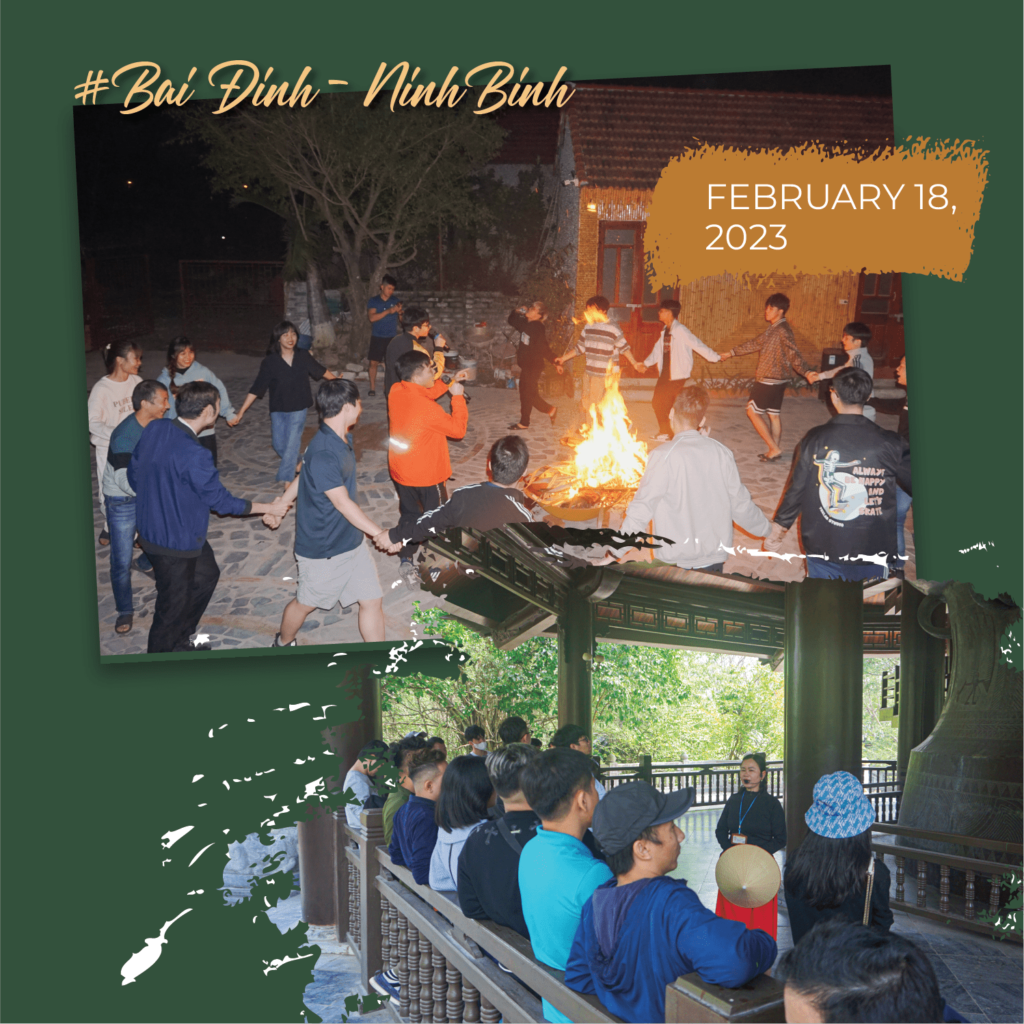
The temple door is wide open with the sound of bells ringing and the scent of incense and flowers always making people’s souls strangely peaceful. They come to the temple not only to pray for good luck or remove their worries, but also to return to their national roots. All of these things are like a sparkling color, creating a colorful feature in the Vietnamese cultural picture.
Once to visit Bai Dinh, step on the stone steps arranged in a moderate slope, gradually increasing to feel the fresh and cool air. In the midst of a sacred place, immense heaven and earth, echoing the sound of bells, visitors will find their hearts serene, letting go of all worries of daily life.
